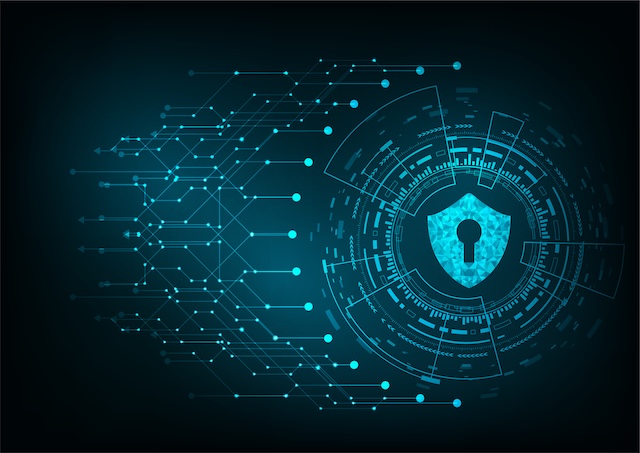
Code mutation refers to the deliberate or automated alteration of source or binary code to create functionally equivalent—yet syntactically different—versions of a program or payload. In cybersecurity, code mutation is primarily associated with evasion techniques used by malware authors, penetration testers, and red teams to bypass signature-based detection mechanisms, as well as its use in software testing for robustness evaluation. For cybersecurity architects, SOC managers, threat intelligence leaders, analysts, CISOs, and CSOs in Fortune 1000 organizations, understanding code mutation is crucial for developing resilient defensive strategies, enhancing threat detection, and supporting secure software development practices.
- Signature Evasion: By mutating code through obfuscation, encoding, or slight logical changes, attackers can circumvent traditional signature-based antivirus, intrusion prevention systems (IPS), and endpoint detection and response (EDR) solutions, making malware and exploits more difficult to detect.
- Mutation Engines: Automated tools or engines can rapidly generate large volumes of mutated malware or exploit payloads, each differing in code structure but preserving original malicious functionality. These are widely used in advanced persistent threat (APT) campaigns and penetration testing frameworks.
- Software Testing (Mutation Testing): In the context of software development, mutation testing introduces deliberate code modifications (mutants) to assess whether existing test suites can detect the changes. This practice identifies weaknesses in test coverage and promotes code reliability.
- Defensive Countermeasures: Security technologies are increasingly employing behavior-based, heuristic, and machine learning techniques to identify mutated code by analyzing runtime characteristics, rather than relying on static signatures.
Code mutation is thus a double-edged sword—used offensively to defeat detection and defensively to harden both software and security monitoring capabilities. Its prevalence makes it a priority topic for enterprise security teams managing sophisticated adversaries and ensuring robust software assurance.
Core Concepts of Code Mutation
Understanding code mutation requires familiarity with several key technical concepts that influence both offensive and defensive cybersecurity strategies.
- Polymorphism and Metamorphism: Polymorphic code changes its appearance (e.g., variable renaming, instruction reordering) each time it runs, while metamorphic code rewrites its entire code body without altering function, further complicating detection.
- Obfuscation Techniques: Attackers employ code obfuscation—such as encoding, encryption, inserting junk code, and manipulating control flow—to create mutated code that remains operational but evades signature matches.
- Automated Mutation Engines: Tools such as shellcode mutators, malware kits, and fuzzers can automatically generate millions of unique code samples, each with different byte patterns and execution flows, accelerating attack campaigns or software validation.
- Mutation Testing Frameworks: In development, frameworks like PIT or Stryker produce mutants to systematically assess the effectiveness of unit and integration tests under “fault injection,” revealing untested code paths.
- Detection and Analysis Challenges: Traditional static analysis tools struggle to keep pace with rapid code mutation, necessitating dynamic analysis, sandboxing, and AI-driven anomaly detection in modern SOC and threat intelligence workflows.
These concepts form the technical backbone for understanding how code mutation impacts both cyber offense and software quality assurance.
Importance of Code Mutation for Enterprise Cybersecurity Professionals
Recognizing and countering code mutation is a central challenge for enterprise cybersecurity teams tasked with defending large-scale, high-value environments. Its significance is multifaceted:
- Threat Intelligence and Malware Analysis: Code mutation complicates reverse engineering and threat attribution, requiring advanced analytical skills and tools to identify common patterns and recognize shared malicious lineage among mutated samples.
- Evasion Detection and Response: SOC teams must adopt behavior- and context-aware detection techniques to identify malicious activity, as relying solely on static signatures is ineffective against polymorphic and metamorphic threats.
- Penetration Testing and Red Teaming: Red teams utilize mutation to generate unique payloads, highlighting gaps in detection controls and enabling organizations to enhance their layered defenses.
- Software Assurance: Mutation testing enhances software quality by uncovering gaps in test coverage, ensuring that applications behave securely even when subject to unexpected code changes or attacks.
- Regulatory and Compliance Requirements: Demonstrating resilience to mutated malware and comprehensive software test coverage supports compliance with frameworks such as NIST, ISO 27001, and PCI DSS.
Proficiency in code mutation concepts enables enterprise defenders to anticipate attacker behavior, enhance detection and response, and fulfill regulatory obligations for secure development and incident resilience.
A Detailed Technical Overview of How Code Mutation Works
The process and impact of code mutation in cybersecurity can be explained through several technical phases and use cases, each relevant to both attack and defense.
- Automated Code Manipulation: Mutation engines parse source or binary code, applying transformations such as instruction substitution, code shuffling, dead code insertion, and encoding/encryption of payloads. In malware, these tactics create virtually unlimited unique samples from a single codebase.
- Runtime Mutation: Some advanced threats mutate code dynamically during execution, rewriting themselves in memory or spawning altered subprocesses to evade detection by both file-based and memory-resident security tools.
- Mutation Testing Workflow: In legitimate development, mutant code is generated and executed in controlled environments. Tests that fail to detect or break mutated logic are flagged for improvement, with coverage metrics calculated to assess overall software defensibility.
- Detection and Triage: SOC analysts rely on behavior analytics, memory forensics, and code similarity analysis to triage alerts, recognizing mutated attack patterns that escape static detection. AI and ML are increasingly vital in correlating variants to common threat actors or campaigns.
Technical mastery of both offensive and defensive mutation workflows is essential for effective malware analysis, proactive threat hunting, and secure, agile development at an enterprise scale.
Applications and Use Cases of Code Mutation
The use of code mutation spans a spectrum of offensive, defensive, and testing scenarios, each shaping how organizations approach both threat response and software quality.
- Malware and Exploit Evasion: Adversaries employ mutation to create vast families of malware that evade hash-based blacklisting and static analysis tools, overwhelming legacy security solutions.
- Penetration Testing and Purple Teaming: Security consultants and internal red teams utilize mutation to demonstrate real-world bypasses of EDR, SIEM, and WAF defenses, enabling blue teams to visualize and remediate detection blind spots.
- Software Quality Assurance: Development teams leverage mutation testing to evaluate code coverage, uncovering logic errors and increasing confidence that automated tests adequately protect security-critical functions.
- Threat Intelligence Correlation: Security researchers use code similarity and mutation pattern analysis to link seemingly unrelated malware samples, uncovering broader campaigns and shared adversary toolkits.
- Automated Defensive Adaptation: Next-generation EDR and SOAR systems integrate heuristic, sandbox, and machine learning modules to flag mutated payloads based on behavioral deviations, enabling rapid containment of zero-day or polymorphic threats.
These use cases illustrate the centrality of code mutation in both the offensive innovation of threat actors and the defensive sophistication required in modern security operations.
Best Practices When Managing Code Mutation Risks
Enterprises must adopt a range of best practices to effectively detect, respond to, and mitigate the risks associated with code mutation—both in the threat landscape and within development lifecycles.
- Defense in Depth: Layer static and dynamic malware analysis, leveraging behavioral, heuristic, and memory-based detection alongside traditional signature engines to maximize coverage against mutated threats.
- Threat Intelligence Utilization: Regularly update detection content using community and commercial threat intelligence sharing, focusing on emerging code mutation techniques and shared adversary infrastructure.
- Secure Coding and Mutation Testing: Incorporate mutation testing into the DevSecOps pipeline, using it as a metric for test coverage and to identify gaps in automated security validation.
- Automated Alert Triage: Integrate ML-driven triage tools that identify mutation patterns and correlate related activity across diverse telemetry sources, improving SOC efficiency and incident prioritization.
- Continuous Training and Red Team Collaboration: Empower blue teams with regular exposure to mutated payloads in tabletop and purple team exercises, fostering proactive identification of detection gaps.
By employing these practices, organizations strengthen their resilience against mutation-based threats and elevate software quality to enterprise standards.
Limitations and Considerations When Addressing Code Mutation
Despite advances in defensive technologies and secure development, code mutation continues to introduce persistent challenges and operational limitations.
- Resource and Scale Constraints: Analyzing massive volumes of mutated samples can overwhelm SOC resources and create alert fatigue, necessitating effective triage and prioritization mechanisms.
- False Positives in Detection: Heuristic and behavioral detection of mutated code, while necessary, can increase false positive rates, placing additional burdens on analyst teams and automated response processes.
- Obfuscated Legitimate Code: Aggressively detecting mutation or obfuscation may inadvertently flag legitimate business applications or custom software, disrupting operations if not properly tuned.
- Mutation Testing Overhead: While mutation testing improves code quality, it can be resource-intensive and introduce delays into CI/CD pipelines if not efficiently managed or scoped.
- Evolving Mutation Techniques: Adversaries continuously refine mutation algorithms, outpacing static detection and challenging even advanced ML models, requiring constant adaptation and investment.
Careful risk management, tool selection, and operational tuning are essential to strike a balance between detection efficacy, operational efficiency, and business continuity in the context of evolving code mutation threats.
Emerging Trends and the Future of Code Mutation
The future of code mutation will be marked by advances both in attacker TTPs and defensive innovation, impacting the landscape for enterprises and security vendors alike.
- AI-Driven Mutation and Detection: Attackers are leveraging AI to automate the generation of highly sophisticated, evasive code mutations. In response, defenders are developing AI/ML algorithms to detect even non-obvious behavior-based relationships and mutation signatures.
- Automated Response Integration: Next-generation security platforms enable the automated blocking and remediation of mutated code using real-time sandboxes, memory hooks, and adaptive playbooks within SOAR and XDR ecosystems.
- Mutation-Resilient Architectures: Organizations are adopting Zero Trust principles and microsegmentation to limit the blast radius of successful mutation-based attacks, focusing on both containment and detection.
- DevSecOps and Secure SDLC: Widespread integration of mutation testing in SDLC pipelines ensures new software releases are resilient to mutation-driven vulnerabilities and logic errors.
- Cloud-Native and Supply Chain Considerations: As code and software supply chains become more complex, mutation threats are extending beyond endpoints to containers, serverless functions, and third-party libraries, requiring broader detection and validation strategies.
These trends will shape the arms race between offensive code mutation techniques and enterprise defensive capabilities, driving innovation and convergence of cyber risk, detection, and software quality assurance.
Conclusion
Code mutation is a crucial concept for enterprise cybersecurity teams, representing both a significant attack vector and a valuable tool for software and security validation. By understanding how adversaries leverage code mutation—and how it can be utilized to enhance test coverage and detection—security leaders can design more adaptive and resilient defenses. As mutation techniques become increasingly sophisticated, organizations must integrate advanced detection, robust development practices, and continuous intelligence to maintain operational security and software integrity.
Deepwatch® is the pioneer of AI- and human-driven cyber resilience. By combining AI, security data, intelligence, and human expertise, the Deepwatch Platform helps organizations reduce risk through early and precise threat detection and remediation. Ready to Become Cyber Resilient? Meet with our managed security experts to discuss your use cases, technology, and pain points, and learn how Deepwatch can help.
Related Content
- Move Beyond Detection and Response to Accelerate Cyber Resilience: This resource explores how security operations teams can evolve beyond reactive detection and response toward proactive, adaptive resilience strategies. It outlines methods to reduce dwell time, accelerate threat mitigation, and align SOC capabilities with business continuity goals.
- The Hybrid Security Approach to Cyber Resilience: This white paper introduces a hybrid model that combines human expertise with automation to enhance cyber resilience across complex enterprise environments. It highlights how integrated intelligence and flexible service models can optimize threat detection and response efficiency.
- 2024 Deepwatch Adversary Tactics & Intelligence Annual Threat Report: The 2024 threat report offers an in-depth analysis of evolving adversary tactics, including keylogging, credential theft, and the use of remote access tools. It provides actionable intelligence, MITRE ATT&CK mapping, and insights into the behaviors of threat actors targeting enterprise networks.
